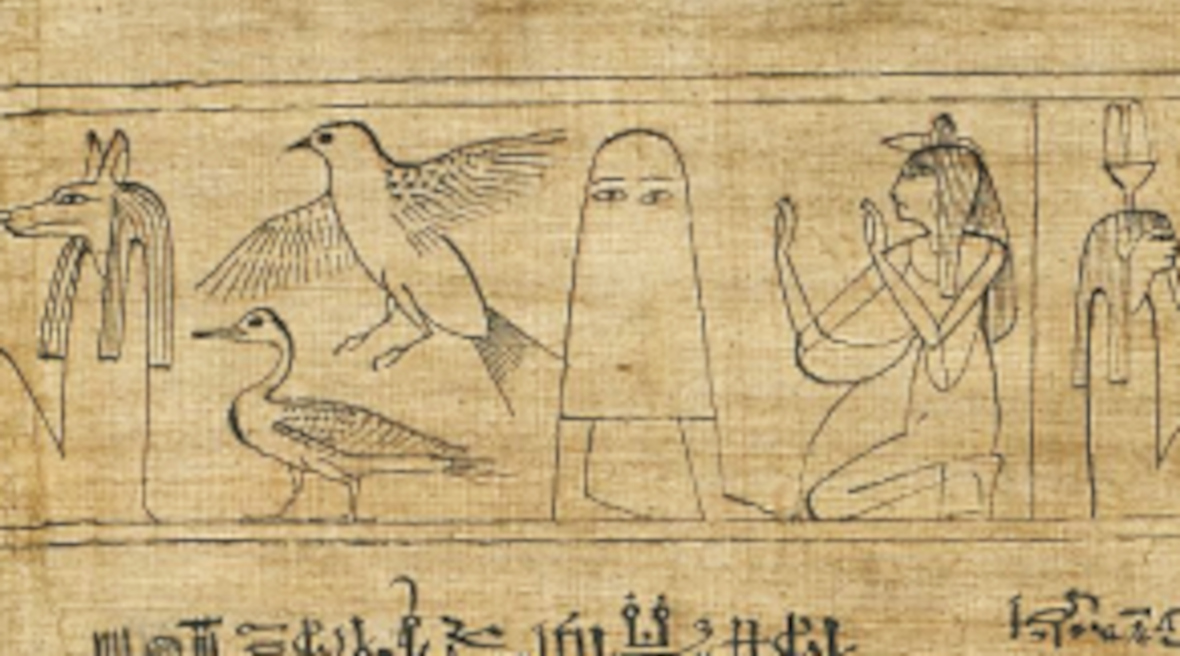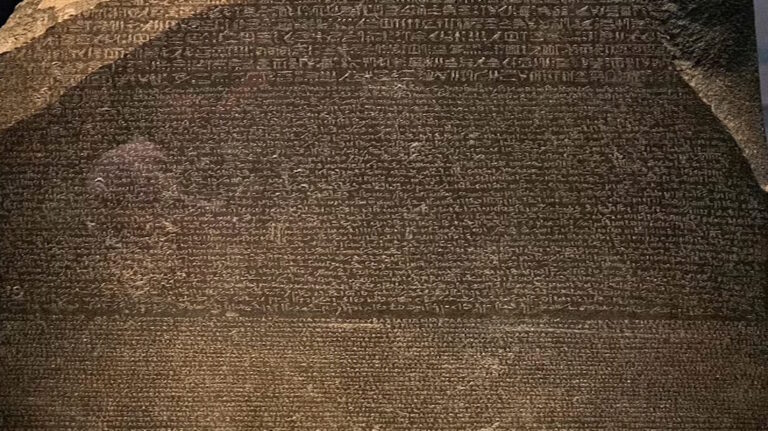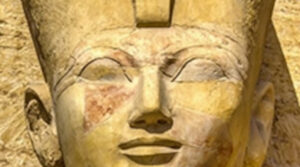“He is one who smites the enemies of Osiris. He sees, but is unseen. He strikes, yet cannot be stopped.”
— Ancient Egyptian funerary text, paraphrased
Among the richly symbolic and visually consistent pantheon of ancient Egyptian deities, one figure is an utter anomaly. His name is Medjed, often translated as “The Smiter.” He doesn’t have the head of a hawk or the body of a man. He doesn’t carry a staff, an ankh, or wear a crown. Instead, Medjed is represented as a simple white blob with two eyes and little legs, facing the viewer head-on.
This forward-facing gaze is almost unheard of in ancient Egyptian art. Nearly all deities—whether they’re gods of the sun, death, or fertility—are depicted in profile, reflecting Egypt’s formal artistic rules. Medjed, however, breaks the mold completely, and in doing so, invites us into a deeper mystery: How do you depict a god who is invisible?
Who is Medjed? The Origins in the Book of the Dead
Medjed appears only in a few Late Period funerary papyri, most notably the Greenfield Papyrus (c. 950 BCE), part of the Book of the Dead belonging to a high priest’s daughter named Nesitanebetashru. These papyri were elaborate guides to the afterlife, meant to help the soul navigate the dangers of the Duat—the Egyptian underworld—and reach judgment before Osiris.
In one of these papyri, Medjed is briefly mentioned and illustrated in an awkward, front-facing pose. He looks almost like a cartoon ghost: a white shroud covering a body, with two protruding eyes and stick legs beneath. That’s it.
He is identified in a caption as:
“Medjed, who smites the enemies of Osiris. He goes unseen and his form is unknown. He strikes from the shadows.”
This short description has sparked centuries of speculation—and more recently, fascination.
An Invisible Force
The symbolism of Medjed’s form is unclear but deeply suggestive. Scholars believe his shrouded body may represent a hidden presence, perhaps divine invisibility or otherworldly power. The text suggests that Medjed “smites with his eyes,” indicating that his gaze itself may carry destructive energy.
Unlike other gods who display their powers through grand iconography—sun disks, animal heads, weapons—Medjed’s minimalist form is his power. He is deliberately undefined.
The Only Front-Facing God in Egyptian Art
Ancient Egyptian artistic conventions were deeply formalized. Gods, humans, and animals were always shown from a side profile—heads, torsos, and limbs rendered in strict proportion and perspective. This was not just artistic choice but a reflection of cosmic order (ma’at) and divine perfection.
To show a god facing forward was a radical break from tradition. Medjed’s frontal gaze may indicate:
- Direct confrontation with the viewer or soul of the deceased
- A sense of omnipresence, where he watches all
- A hidden nature that defies visual form
His depiction is not sloppy—it’s deliberately strange, possibly to emphasize his unseeable nature.
Role in Egyptian Mythology
While Medjed’s exact function remains unclear, he is associated with the House of Osiris, suggesting a role in the afterlife or as a guardian figure. Some interpretations propose that he serves as a punisher of wrongdoers, wielding his eye-beams to smite evil.
Modern Revival: From Obscurity to Internet Fame
For centuries, Medjed was little more than a curiosity in academic circles. That changed dramatically in the 2010s when the Greenfield Papyrus was digitized by the British Museum. Japanese artists and meme creators quickly latched onto Medjed’s odd appearance and gave him new life.
In Japan, he is now:
- A kawaii (“cute”) ghost-like character in anime and manga
- A mascot in mobile games and social media
- Featured in plushies, keychains, and even pop-up cafes
This strange, shrouded god has become a symbol of quirky mystery, reminding us how the ancient and modern can collide in unexpected ways.
The Power of the Undefined
Medjed is the embodiment of a concept we often struggle to express: unseen power. While most Egyptian gods are known through elaborate forms and rich mythologies, Medjed resists interpretation. His simplicity and obscurity are precisely what make him compelling.
He’s a god who stares back—who demands we confront the unknown, the formless, the hidden. In a way, he is not just an Egyptian god, but a timeless archetype of mystery itself.
“His body is shrouded, his name is whispered, and his gaze is eternal.”
Further Reading & Exploration
British Museum Collection: Greenfield Papyrus Online Exhibit
The Egyptian Book of the Dead: The Book of Going Forth by Day (Translation by Raymond Faulkner)
Articles on Medjed’s pop culture rise in Japanese media (available on JSTOR and anime culture blogs)
Medjed in Popular Culture and Modern Interpretations
In recent years, Medjed has gained a curious following beyond Egyptology:
Japanese pop culture has embraced Medjed as a quirky “ghost” character, often depicted as cute or comical while retaining his mysterious eyes.
Medjed appears in video games, anime, and manga, sometimes reimagined as a supernatural ally or mischievous spirit.
His image is popular on social media and merchandise, showing how ancient mystery can inspire new narratives.







